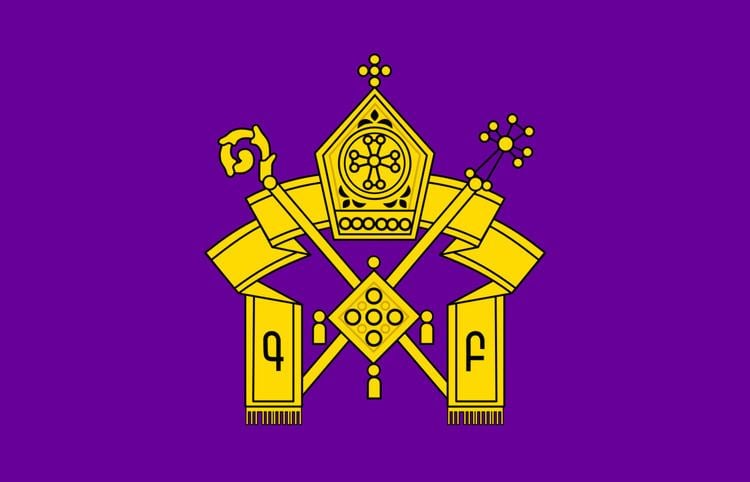 | ||
The First Council of Dvin (Armenian: Դվինի առաջին ժողով, Dvini ařaĵin žoğov or Դվինի Ա ժողով Dvini A žoğov) was a church council held in 506 in the Armenian city of Dvin. It convened to discuss the Henotikon, a christological document issued by Byzantine emperor Zeno in an attempt to resolve theological disputes that had arisen from the Council of Chalcedon.
The Council was convoked by the Catholicos of the Armenian Apostolic Church Babgen I Umtsetsi. Besides the Armenians, delegates from the Georgian and Albanian churches were present. According to the Book of Epistles, 20 bishops, 14 laymen, and many Nakharars (princes) attended the council.
The Armenian Church had not accepted the conclusions of the Council of Chalcedon, which had defined that Christ is 'acknowledged in two natures', thus condemning monophysitism and miaphysitism, which insisted on the unification of human and divine natures into Christ. This was the doctrine of the Armenian Church among others. The Henotikon, Emperor Zeno's attempt at conciliation, was published in 482. It reminded bishops of the condemnation of Nestorian doctrine, which emphasized the human nature of Christ, and did not mention the Chalcedonian diaphysitic creed. The First Council of Dvin was thus able to accept the Henotikon and keep open a possibility of conciliation with the Patriarchate of Constantinople while remaining steady in its christological doctrine.
The Council stopped short of formally rejecting the Chalcedonian Definition of the dual nature of Christ. Such a step, which formalized the Armenian break from the Roman church, would not take place until the Second Council of Dvin, in 554/555.
The Acts of the Council were discovered by Karapet Ter Mkrtchian and published by him in 1901.
